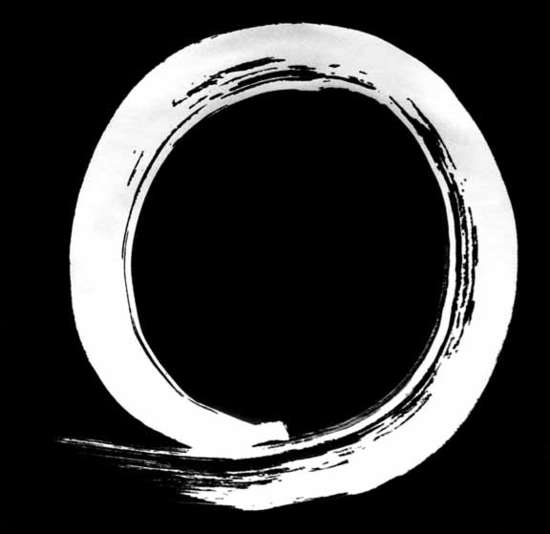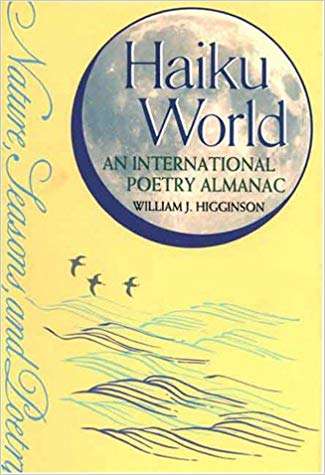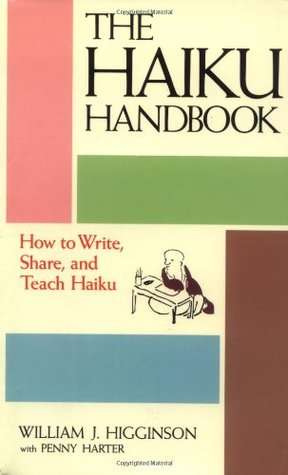
Page 20 of 21
Our first renga (renku)
I have just posted the opening verse of our first group renga (linked verse).
We will keep the rules very simple.
1) Renga is written by 3 or more poets and they all contribute at any time, but one never writes two verses in a row.
2) A renga is always written as 3-2-3-2-3-2 etc.
3) Syllable count is not important; onji are word sounds and thus are shorter than our syllable count.
4) Remember that each new verse is connected to the last verse and thus the renga winds in many unrelated directions. A poem can change completely in the matter of a few verses. It can go from one emotion to another, from melancholic to happiness to anger and laughter.
5) Have fun!
We will keep the rules very simple.
1) Renga is written by 3 or more poets and they all contribute at any time, but one never writes two verses in a row.
2) A renga is always written as 3-2-3-2-3-2 etc.
3) Syllable count is not important; onji are word sounds and thus are shorter than our syllable count.
4) Remember that each new verse is connected to the last verse and thus the renga winds in many unrelated directions. A poem can change completely in the matter of a few verses. It can go from one emotion to another, from melancholic to happiness to anger and laughter.
5) Have fun!
Senryu, and How It Differs from Haiku
Now posted as an article of reference in the DUP group The Haiku Pond.
Compared to other styles of poetry under the category of Haiku/ Eastern, there is comparatively little published about the more aggressive senryu.
Senryu, whose name means ‘river willow’, uses humor and satire to examine human society. Senryu takes on the form of haiku, but makes greater use of punctuation techniques (ellipses, exclamations, etc.) to convey its point. Senryu can use seasonal kigo, but does not rely on them. In senryu, the seasonal reference should be second in importance to the human portrayal. Contrary to popular belief, not all senryu is humorous. Many express misfortune, eroticism, political views (very important), religion & spirituality, and even anger (observational, not overflowing emotion like tanka). It is often bawdy, devoid of the subtle beauty known in haiku. Animals can also be represented through interaction using human personifications.
Originating during Japan's Edo period, senryu reflected both the societal and political turmoil of the time period. Popularized by a haijin named Senryu Karai, senryu was first recognized in the haiku contests going on in the cities. Haiku was written by the Japanese aristocratic class, court officials, and revered monks. Senryu was embraced and written by the common people. It was later given its own genre and studied alongside haiku and tanka.
While following the form of haiku, senryu is different in that it is not a form in itself. Senryu is a concept, a way of looking at things that are applied to haiku form, and a poetic genre that concerns human nature in its complex layers and emotions. More than being a style like haiku, known for its expression of nature within seasonal themes, senryu is a conceptual spinoff from haiku.
Since 2007, I have studied and written modern haiku, tanka, and senryu. To understand all three gives a wider range for expression. In the case of senryu, you become aware of your reactionary observations with the interaction of humanity from a social and cultural influence.
A small sampling of my own senryu offerings:
wasp nest
in my mailbox—
unpaid bills
soccer ball out of bounds—
kids running
for the ice cream truck
tackle box—
the ciggies Dad left
ten years ago
so much mental baggage
left behind—
a stick of gum in my pocket
beyond the reef
scattered ashes—
his son's trip to Peru
indebted—
in love
Jade’s update comment: Please notice
1: the absence of titles.
2: the range of syllable count used (Japanese haijin use ‘sound symbols’ which are shorter.
3: the number of lines used. Haiku & senryu can be 1, 2, or 3 lines.
4: the minimal use of upper-case letters. Proper names of people and places (countries, cities, towns, streets, etc) are some of the exceptions.
5: the absence of most or all punctuation. (The symbol you see in my samples is called an “emdash”.)
I thank all who have come to the font of my humble essay for any useful knowledge you may take away. My gratitude to our group host, Harry, and to the group & site’s creator, our Webmistress.
Jade (tiger)
Kyōshi hisui no tora
Compared to other styles of poetry under the category of Haiku/ Eastern, there is comparatively little published about the more aggressive senryu.
Senryu, whose name means ‘river willow’, uses humor and satire to examine human society. Senryu takes on the form of haiku, but makes greater use of punctuation techniques (ellipses, exclamations, etc.) to convey its point. Senryu can use seasonal kigo, but does not rely on them. In senryu, the seasonal reference should be second in importance to the human portrayal. Contrary to popular belief, not all senryu is humorous. Many express misfortune, eroticism, political views (very important), religion & spirituality, and even anger (observational, not overflowing emotion like tanka). It is often bawdy, devoid of the subtle beauty known in haiku. Animals can also be represented through interaction using human personifications.
Originating during Japan's Edo period, senryu reflected both the societal and political turmoil of the time period. Popularized by a haijin named Senryu Karai, senryu was first recognized in the haiku contests going on in the cities. Haiku was written by the Japanese aristocratic class, court officials, and revered monks. Senryu was embraced and written by the common people. It was later given its own genre and studied alongside haiku and tanka.
While following the form of haiku, senryu is different in that it is not a form in itself. Senryu is a concept, a way of looking at things that are applied to haiku form, and a poetic genre that concerns human nature in its complex layers and emotions. More than being a style like haiku, known for its expression of nature within seasonal themes, senryu is a conceptual spinoff from haiku.
Since 2007, I have studied and written modern haiku, tanka, and senryu. To understand all three gives a wider range for expression. In the case of senryu, you become aware of your reactionary observations with the interaction of humanity from a social and cultural influence.
A small sampling of my own senryu offerings:
wasp nest
in my mailbox—
unpaid bills
soccer ball out of bounds—
kids running
for the ice cream truck
tackle box—
the ciggies Dad left
ten years ago
so much mental baggage
left behind—
a stick of gum in my pocket
beyond the reef
scattered ashes—
his son's trip to Peru
indebted—
in love
Jade’s update comment: Please notice
1: the absence of titles.
2: the range of syllable count used (Japanese haijin use ‘sound symbols’ which are shorter.
3: the number of lines used. Haiku & senryu can be 1, 2, or 3 lines.
4: the minimal use of upper-case letters. Proper names of people and places (countries, cities, towns, streets, etc) are some of the exceptions.
5: the absence of most or all punctuation. (The symbol you see in my samples is called an “emdash”.)
I thank all who have come to the font of my humble essay for any useful knowledge you may take away. My gratitude to our group host, Harry, and to the group & site’s creator, our Webmistress.
Jade (tiger)
Kyōshi hisui no tora
Written by Jade-Pandora
(jade tiger)

Senryu, and How It Differs from Haiku
Hello
I am very excited with the launch of this group. Many thanks to DU and WM for allowing it to happen.
I will begin our first renku (linked verse) very soon. We will keep it small for beginners and then everyone will have the honor of composing the opening hokku.
Please feel free to post haiku and senryu on other topics beside our weekly word play theme as I look forward to reading them all.
I will post something on tanka writing very soon as this is also a love of mine. I hope to post some information on some of the great haijins of the past. Look forward to any input by you all, we are all teachers and students...always learning from each other.
Cheers...Harry
I will begin our first renku (linked verse) very soon. We will keep it small for beginners and then everyone will have the honor of composing the opening hokku.
Please feel free to post haiku and senryu on other topics beside our weekly word play theme as I look forward to reading them all.
I will post something on tanka writing very soon as this is also a love of mine. I hope to post some information on some of the great haijins of the past. Look forward to any input by you all, we are all teachers and students...always learning from each other.
Cheers...Harry
Renku (Renga)
Renku writing (linked verse) is where the haiku genre found it's beginnings in Japan. Haijuns like Matsuo Basho would hold gatherings, often on full moon evenings, where food was eaten and Saki was enjoyed. One poet was chosen to compose the opening three lines, a hokku. After which each haijun would take turns composing the next verse, sometimes these renku would go for a hundred plus verses.
The opening hokku consisted of three lines, followed by two, three, two etc. Each verse is connected to the last verse so that the renku constantly keeps changing in a subtle way. It is this subtle change that takes the poem on a wonderful journey, often sad, sometimes humorous, serious or lighthearted; each renku takes on a life of its own...a beautiful dragon of words.
The birth of haiku as an independent poetry form was simply due to the fact that all haijuns began writing hokku, the opening renku verse, in the hope of being invited to be first at one of these gatherings. Naturally there soon was an abundance of unused hokku, thus haiku was born.
I look forward to our very first dragon.
Cheers...Harry
The opening hokku consisted of three lines, followed by two, three, two etc. Each verse is connected to the last verse so that the renku constantly keeps changing in a subtle way. It is this subtle change that takes the poem on a wonderful journey, often sad, sometimes humorous, serious or lighthearted; each renku takes on a life of its own...a beautiful dragon of words.
The birth of haiku as an independent poetry form was simply due to the fact that all haijuns began writing hokku, the opening renku verse, in the hope of being invited to be first at one of these gatherings. Naturally there soon was an abundance of unused hokku, thus haiku was born.
I look forward to our very first dragon.
Cheers...Harry
Syllable count or not?
There is a misunderstanding when it comes to syllables in Japanese poetry. The Japanese do not have syllables as we do, they have 'onji'. This has led to countless problems in regards to the seventeen syllable count in haiku and senryu (5-7-5}, as a teacher of haiku/senryu, I have encountered the problem with school teachers on many occasions. I do not count syllables at all when composing and seventeen syllables is considered too long. My suggestion is to keep your syllable count to around the no more than fourteen or fifteen at the very most.
This is one of mine and as you can see it has only nine syllables
Here is a translation of Basho's most famous haiku by William J. Higginson.
Old pond...
a frog jumps in
water's sound.
As you can see, only nine syllables.
My advice is to keep your haiku and senryu as short as possible. Naturally there will be times when your syllable count will be higher and there is nothing wrong with that, in the end, it is your poem.
Cheers...Harry
This is one of mine and as you can see it has only nine syllables
Here is a translation of Basho's most famous haiku by William J. Higginson.
Old pond...
a frog jumps in
water's sound.
As you can see, only nine syllables.
My advice is to keep your haiku and senryu as short as possible. Naturally there will be times when your syllable count will be higher and there is nothing wrong with that, in the end, it is your poem.
Cheers...Harry





















